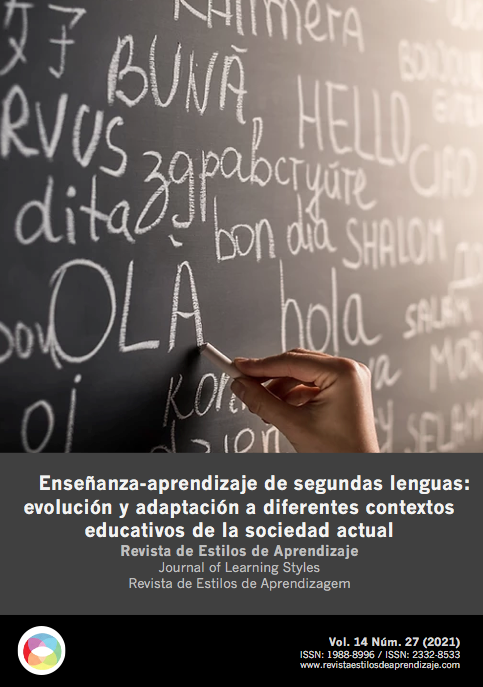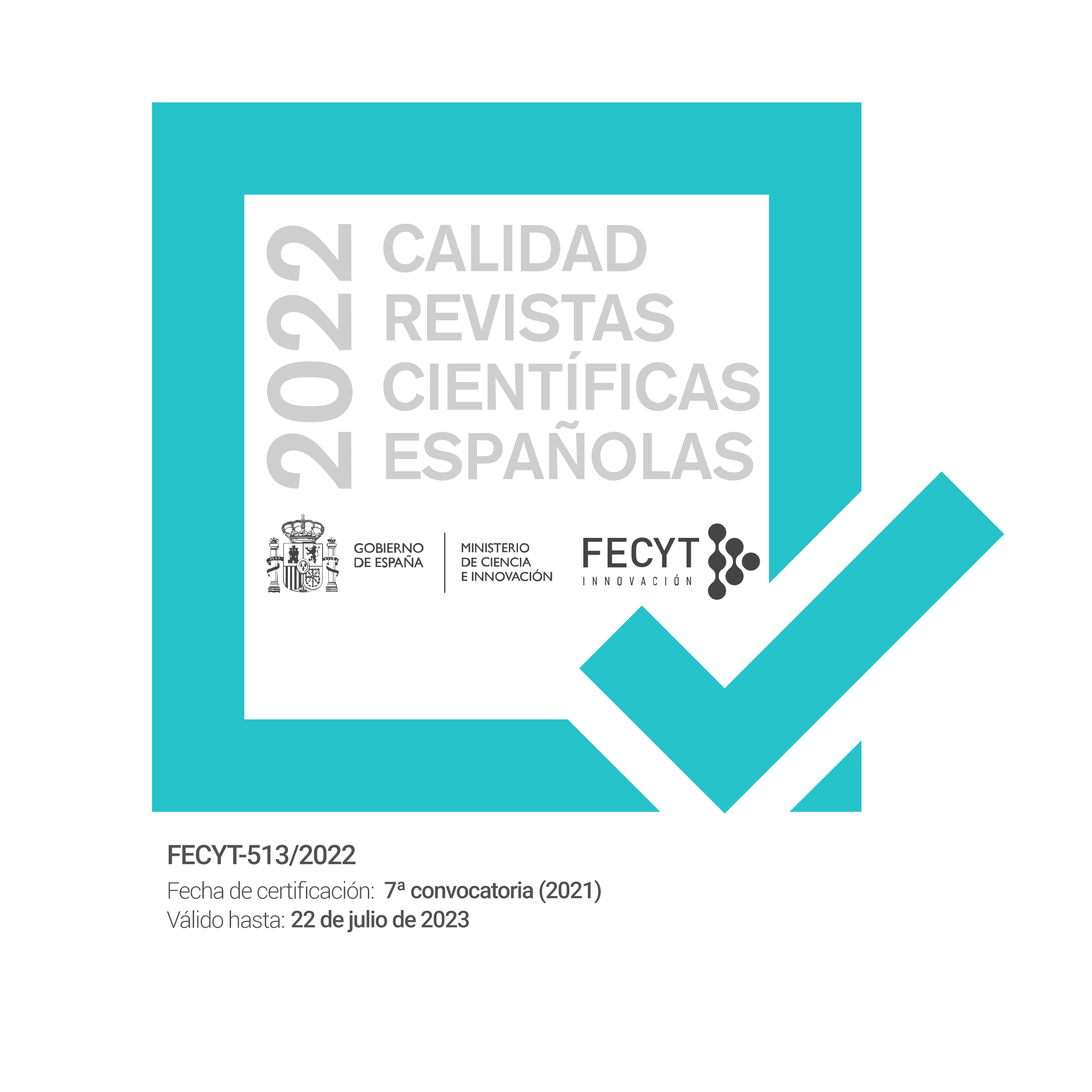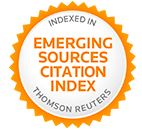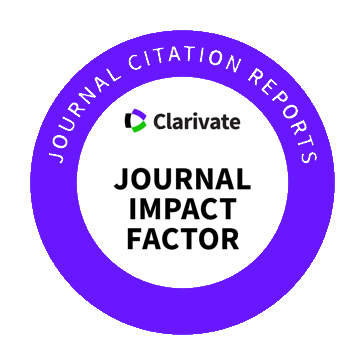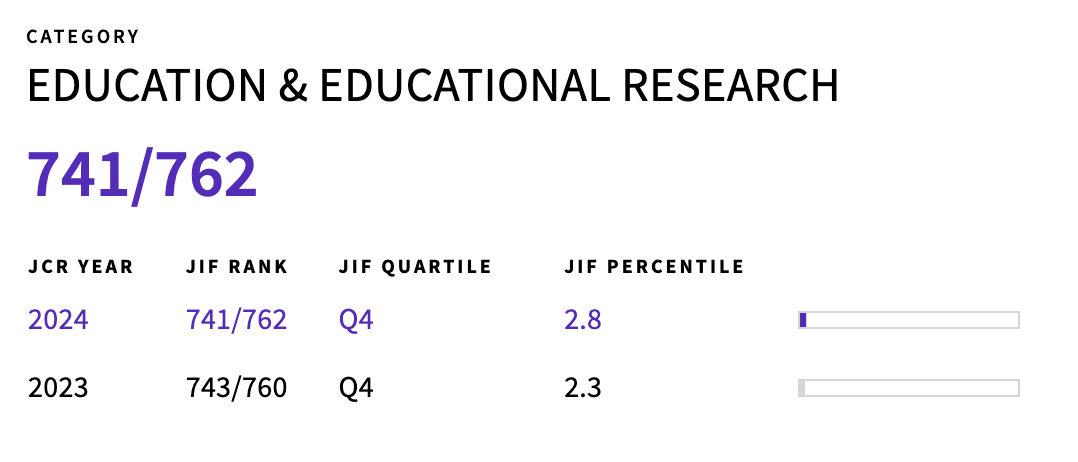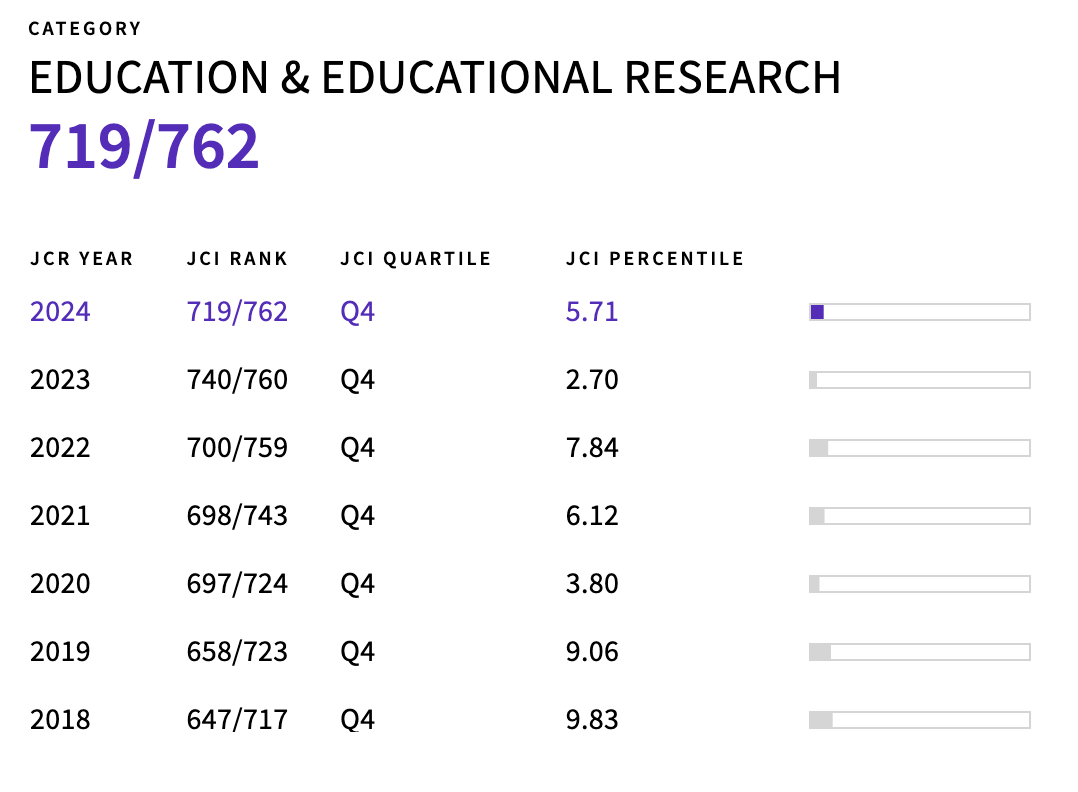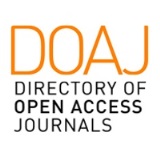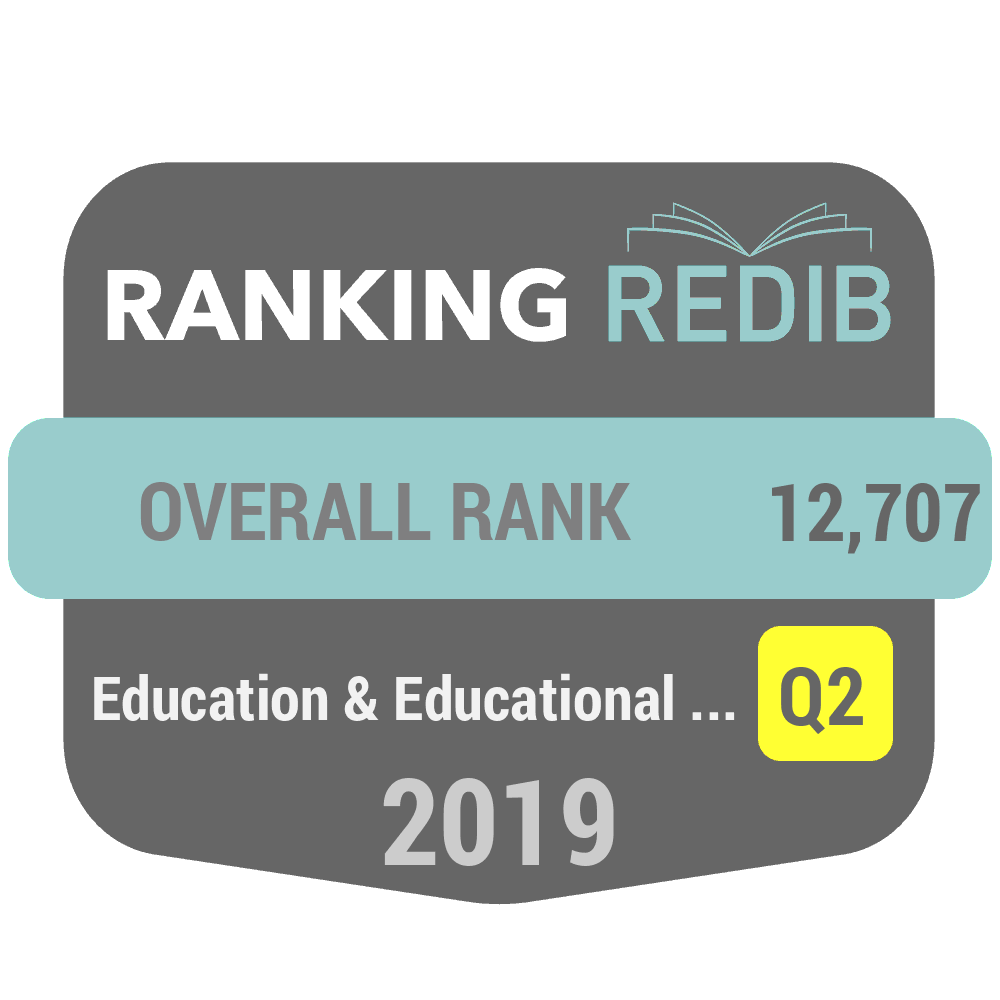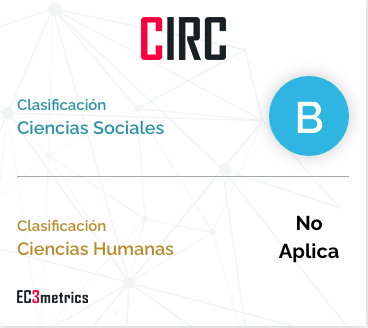Effectiveness of a Neurolinguistic Programming Course on Self-Esteem: Implications of Neurolinguistic Programming for Learning
DOI:
https://doi.org/10.55777/rea.v14i27.2209Keywords:
Self-esteem, Rosenberg Scale, Neuro Linguistic Programming, NLP, LearningAbstract
Neuro-linguistic programming (NLP) is a cognitive constructivist approach to improving human communication and behaviour, which focuses on how people organise their thoughts, feelings and language. The main objective of this study was to assess the impact of an NLP course on self-esteem. A quasi-experimental, controlled study with pre-post measures was designed. A total of 54 subjects participated (21 in the experimental group and 33 in the control group). Self-esteem was measured using an ad-hoc questionnaire (8 items, the first 6 of which were adapted from the Rosenberg scale). The experimental group showed increases in self-esteem in all 8 items compared to the control group, and in 6 items (5 of them adapted from the Rosenberg scale) the differences were statistically significant. The percentage change between the two groups ranged from 11% to 36%. This study provides empirical evidence of the effectiveness and usefulness of NLP in increasing people's self-esteem. It also describes various applications of NLP and various implications of self-esteem enhancement in learning and education, as well as in other aspects of people's personal and professional lives.
Downloads
References
Álvarez-Jarquin, F. (2016). Estilos de aprendizaje: PNL en NovaUniversitas. Perspectivas docentes, 60, 5-14. https://dialnet.unirioja.es/servlet/articulo?codigo=6349227
Amaya, A., y Cuéllar, A. (2016). Estilos de aprendizaje de los alumnos de posgrado a distancia de la Universidad Autónoma de Tamaulipas, Apertura, 8(2), 8-21. DOI: http://dx.doi.org/10.18381/Ap.v8n2.838
Ancer,E., Meza, C., Pompa, E., Torres, F. y Landero, R. (2011). Relación entre los niveles de autoestima y estrés en estudiantes universitarios. Enseñanza e investigación en psicología, 16(1), 91-101. http://eprints.uanl.mx/8127/1/l1_1.pdf
Andreas, S. (2014). SST with NLP. Rapid transformations using content-free instructions. In Hoyt M. and Talmon M. (Eds): Capturing the moment: Single session therapy and walk-in services. Crown House Publishing Limited. https://psycnet.apa.org/record/2014-45237-000
Araujo, M.E. (2018). PNL y superaprendizaje en el desarrollo cognitivo: Una experiencia en el PPD. Educere: Revista Venezolana de Educación, 71(22): 153-161. https://dialnet.unirioja.es/servlet/articulo?codigo=6607515
Arvelo, M., y Soto, A. (2016). Programación neurolinguística para fomentar la dirección afectiva, creatividad y comunicación en el aula. AUC Revista de Arquitectura, 37, 43-50. https://editorial.ucsg.edu.ec/ojs-auc/index.php/auc-ucsg/article/view/6
Atienza, F.L., Balaguer I. y Moreno, Y. (2000). Análisis de la dimensionalidad de la escala de autoestima de Rosenberg en una muestra de adolescentes valencianos. Revista de Psicología. Universitas Tarraconensis,22(1-2), 29-42. https://www.researchgate.net/publication/308341043_Analisis_de_la_dimensionalidad_de_la_Escala_de_Autoestima_de_Rosenberg_en_una_muestra_de_adolescentes_valencianos
Bandler, R. y Grinder, J. (1975). The structure of magic I and II. Science and Behavior Books, Inc. Palo Alto, California. https://www.abebooks.co.uk/book-search/title/the-structure-of-magic/author/bandler-and-grinder
Boughattas, W., Missoum, G. y Moella, N. (2017). Développement des habiletés mentales et performance sportive de haut niveau: la programmation neurolinguistique appliquée à la pratique compétitive du judo. Pratiques Psychologiques, 23(2),153-165. https://www.sciencedirect.com/science/article/abs/pii/S1269176317300196
Calvo, A.J., González, R., y Martorell, M.C. (2001). Variables relacionadas con la conducta prosocial en la infancia y adolescencia: personalidad, autoconcepto y género. Infancia y Aprendizaje, 24(1), 95-111. DOI: 10.1174/021037001316899947
Childers, J.H. (1989). Looking at yourself through loving eyes. Elementary School Guidance & Counseling, 23(3), 204-209. https://psycnet.apa.org/record/1989-31251-001
Diener, E. (1994). Assessing subjective well-being: Progress and opportunities. Social I Indicator Research, 31(2), 103-157. DOI: https://doi.org/10.1007/BF01207052
Dilts, R. y DeLozier J. (2000). The Encyclopedia of Systemic Neuro-Linguistic Programming and NLP New Coding. Scotts Valley California: NLP University Press. http://nlpuniversitypress.com
Dowd, S. A. (2002). Internalizing symptoms in adolescents: Assessment and relationship to selfconcept. Dissertation Abstract International Section B: The Sciences and Engineering, 62(8-B), 3796.: https://digitalcommons.usu.edu/etd/6151
Ducasse, D. y Fond, G. (2014). Communicating effectively: neuro-linguistic programming in the psychiatric interview. Soins Psychiatrie, 291, 9-36. https://pubmed.ncbi.nlm.nih.gov/24741829
Ellett, L., Lopes, B. y Chadwick, P. (2003). Paranoia in a nonclinical population of college students. Journal of Nervous and Mental Disease, 191(7), 425-430. DOI: 10.1097/01.NMD.0000081646.33030.EF
Farahani, F. (2018). The Effect of Neuro-Linguistic Programming (NLP) on Reading Comprehension in English for Specific Purposes Courses. International Journal of Education and Literacy Studies, 6(1), 79-85. DOI: http://dx.doi.org/10.7575/aiac.ijels.v.6n.1p.79
Garaigordobil, M., Cruz, S. y Pérez,J. I. (2003). Análisis correlacional y predictivo del autoconcepto con otros factores conductuales, cognitivos y emocionales de la personalidad durante la adolescencia. Estudios de Psicología, 24(1), 113-134. http://hdl.handle.net/11162/21073
Garaigordobil, M., Durá, A. y Pérez, J.I. (2005). Síntomas psicopatológicos, problemas de conducta y autoconcepto-autoestima: un estudio con adolescentes de 14 a 17 años. Anuario de Psicología Clínica y de la Salud, 1, 53-63. https://www.researchgate.net/profile/Maite-Garaigordobil/publication/28203413_Sintomas_psicopatologicos_problemas_de_conducta_y_autoconcepto-autoestima_Un_estudio_con_adolescentes_de_14_a_17_anos/links/09e41505a3ccf4d26d000000/Sintomas-psicopatologicos-problemas-de-conducta-y-autoconcepto-autoestima-Un-estudio-con-adolescentes-de-14-a-17-anos.pdf
García-Bacete, F.J. y Musitu G. (1993). Rendimiento académico y autoestima en el ciclo superior de EGB. Revista de Psicología de la Educación, 4(11), 73-87. http://hdl.handle.net/10234/168456
González-Clavero, M.V. (2011). Estilos de Aprendizaje: Su Influencia para Aprender a Aprender. Revista de Estilos de Aprendizaje, 4(7):207-216. http://revistaestilosdeaprendizaje.com/article/view/930/1638
Gutiérrez-Saldaña, P., Camacho-Calderón, N. y Martínez-Martínez, M. (2007). Autoestima, funcionalidad familiar y rendimiento escolar en adolescentes. Atención Primaria, 39(11), 597-601. https://core.ac.uk/download/pdf/82158698.pdf
HemmatiMaslakpak, M., Farhadi, M. yFereidoni, J. (2016). The effect of neuro-linguistic programming on occupational stress in critical care nurses. Iranian Journal of Nursing and Midwifery Research, 21(1): 38-44. DOI: 10.4103/1735-9066.174754
Hervás, G. (2009). Psicología positiva: una introducción. Revista Interuniversitaria de Formación del Profesorado, 66(23), 23-41. https://www.researchgate.net/publication/236904237_Psicologia_Positiva_Una_introduccion
Hornby, A., Gatenby, E. y Wakefield, H. (1972). The advanced learner's dictionary of current English. (17a Ed). Oxford University Press. London (UK).
Hosseinzadeh, E., y Baradaran, A. (2015). Investigating the Relationship between Iranian EFL Teachers‘ Autonomy and Their Neuro-Linguistic Programming. English Language Teaching, 8(7): 68-75. http://www.esp-world.info/Articles_44/DOCS/Fatemeh_Effect_of_Neuro_paper.pdf
Javadi, M., Saeid, Y., Mokhtari, J. y Sirati-Nir, M. (2014). The effect of neuro linguistic programing strategies training on nurses’ emotional intelligence: a randomized clinical trial study. Journal of Applied Environmental and Biological Sciences,4(7), 238-24. https://www.researchgate.net/publication/267450550_The_Effect_of_Neuro_Linguistic_Programing_Strategies_Training_on_Nurses'_Emotional_Intelligence_A_Randomized_Clinical_Trial_Study
Karatzias, A., Power, K.G. y Swanson, V. (2001). Predicting use and maintenance of use of substances in Scottish adolescents. Journal of Youth and Adolescence, 30(4), 465-484. https://link.springer.com/article/10.1023/A:1010497216920
Khosrow-Pour, M (Ed.), Computational linguistics: Concepts, methodologies, tools, and applications, Vols. I – III, 1569-1585. Hershey, PA, US. https://www.irma-international.org/book/computational-linguistics-concepts-methodologies-tools/99432
Kim, D.S. y Ki, Y.W. (2008). The effects of applying the NLP (Neuro Linguistic Programing) self growth program in corporations. Lifelong Education and HRD Research, 4(1), 91-111. DOI: 10.35637/klehrd.2008.4.1.004
Kong, E. y Farrell, M. (2014). A preliminary study of Neuro-Linguistic Programming in nonprofit organizations: facilitating knowledge and learning capabilities for innovation. DOI: 10.4018/978-1-4666-4769-5.ch009
Kotera, Y. (2017). A qualitative investigation into the experience of neuro-linguistic programming certification training among Japanese career consultants. British Journal of Guidance & Counselling, 46(1), 39-50. DOI: 10.1080/03069885.2017.1320781
Kotera, Y., Sheffield, D. y Van Gordon, W. (2018). Organisational applications of neuro-linguistic programming: A systematic review. Human Resource Development Quarterly. DOI: 10.1002/hrdq.21334
Lashkaran, A. y Sayadian S. (2015). The effect of Neuro Linguistic Programming (NLP) techniques on young Iranian EFL learners' motivation, learning improvement, and on teacher's success. Procedia-Social and Behavioral Sciences, 199, 510-516. DOI: 10.1016/j.sbspro.2015.07.540
Lyubomirsky, S. (2001). Why are some people happier than others? The role of cognitive and motivational process in wellbeing. American Psychologist, 56(3), 239-249. DOI: https://doi.org/10.1037/0003-066X.56.3.239
McCullough, G., Huebner, E.S. y Laughlin, J.E. (2000). Life events, self-concept and adolescents’ positive subjective well-being. Psychology in the Schools, 37(3), 281-290. DOI: https://doi.org/10.1002/(SICI)1520-6807(200005)37:3<281::AID-PITS8>3.0.CO;2-2
Myers, D. y Diener, E. (1996). The pursuit of happiness. Scientific American,74(5):70-2. DOI: 10.1038/scientificamerican0596-70
Myers, D. y Diener, E. (2018). The scientific pursuit of happpiness. Perspectives on Psychological Science, 13(2), 218-225. DOI: https://doi.org/10.1177/1745691618765171
Peña, X. y Colina, A. (2011). La programación neurolinguística- PNL. Una perspectiva desde la Formación Docente. https://www.portalesmedicos.com/publicaciones/articles/3675/1/La-Programacion-Neurolinguistica-PNL-Una-perspectiva-desde-la-Formacion-Docente.html
Pourbahreini, F. (2015). The Effect of Neuro-Linguistic Programming Technique on Enhancing Grammatical Knowledge of Iranian EFL Learners at Intermediate Level. English for Specific Purposes World,16(44). http://www.philologician.com/Articles_44/DOCS/Fatemeh_Effect_of_Neuro_paper.pdf
Rosenberg, M. (1965). Society and the adolescent self-image. Princeton, NJ: Princeton University Press. https://science.sciencemag.org/content/148/3671/804/tab-pdf
Rosenberg, M. (1973). La autoimagen del adolescente y la sociedad. Buenos Aires. Paidos.
Sabaté, M. y Díez, E. (2020). Análisis bibliométrico de las publicaciones en programación neurolingüística entre 1983-2018. Revista de Estilos de Aprendizaje, 13(25):125-145. http://revistaestilosdeaprendizaje.com/article/view/1477
Sahebalzamani, M. (2019) Efficacy of neurolinguistic programming training on mental health in nursing and midwifery students. Iran Journal Nursing Midwifery Research, 19(5),503-507. https://www.ncbi.nlm.nih.gov/pmc/articles/PMC4223968
Salami, S (2015). Implementing neuro linguistic programming (NLP) in changing students‘ behavior: research done at islamic universities in Aceh. Jurnal Ilmiah Peuradeun, 3(2), 235-256. https://journal.scadindependent.org/index.php/jipeuradeun/article/view/65
Scheier, L., Botvin, G., Griffin, K. y Díaz T. (2000). Dynamic growth models of self-esteem and adolescent alcohol use. Journal of Early Adolescence, 20(2), 178-209. DOI: https://doi.org/10.1177/0272431600020002004
Shalini, W. y Vanitha, J. (2017). Effectiveness of Neuro Linguisting Programme on Academic stress among nursing students. Global Journal for Research Analysis, 6(3), 44-45. https://www.worldwidejournals.com/global-journal-for-research-analysis-GJRA/recent_issues_pdf/2017/March/March_2017_1491816954__17.pdf
Sharif, S, y Abdul-Aziz E. (2015). Application of Neuro-Linguistic Programming Techniques to Enhance the Motivation of At-Risk Student. International E-Journal of Advances in Education, 1(1): 42-48. DOI: https://doi.org/10.18768/ijaedu.65269
Silva Sprock, A. (2018). Conceptualización de los Modelos de Estilos de Aprendizaje. Revista de Estilos de Aprendizaje, 11(21):35-109. http://revistaestilosdeaprendizaje.com/article/view/1088
Tocci, A.M. (2013). Estilos de Aprendizaje De los Alumnos de Ingeniería según la Programacion Neuro Lingüística. Revista de Estilos de Aprendizaje, 6(12). 167-178. http://revistaestilosdeaprendizaje.com/article/view/994
Tsimtsiou, Z., Stavropoulou, C., Papastefanou, N. y Lionis C. (2017). Enhancing clinical communication in dermatologists: a personalized educational intervention. Journal of Dermatological Treatment, 28(7), 647-651. DOI: https://doi.org/10.1080/09546634.2017.1309348
Turkowski, P., Jȩdrzejczyk, J., Huflejt-łukasik, M. y Wieliczko, J. (2016). Neuro-linguistic psychotherapy in treatment of anxiety disorders.Psychoterapia, 3(178),53-62. https://www.nlpt.at/res11.pdf
Vianna, L.A.C., Bomfim, G.F.T. y Chicone, G. (2006). Self-esteem of raped women. Revista latino-Americana de Enfermagem, 14(5), 695-701. DOI: 10.1590/S0104-11692006000500009
Zaharia, C., Reiner, M. y Schütz P. (2015). Evidence-based Neuro linguistic psychotherapy: A meta-analysis. Psychiatria Danubina, 27(4):355-63. https://pubmed.ncbi.nlm.nih.gov/26609647
Downloads
Published
How to Cite
Issue
Section
License
By submitting the original, the author(s) declare that they are aware of and accept, in full, the privacy policy as well as the copyright of the Learning Styles Magazine.
The Learning Styles Magazine offers free and open access to its content, completely free of charge, in order to bring scientific research to its readers and society in general. All digital contents are free and open access and are published under a Creative Commons license:

Rights are granted under the Creative Commons Reconocimiento-NoComercial-SinObraDerivada 4.0 Internacional (CC-BY-NC-ND 4.0)
The Learning Styles Magazine is an open access journal. Publication of articles or reviews in the Journal does not entitle you to any remuneration. For authors as well as readers, the journal is free Creative Commons Reconocimiento-NoComercial-SinObraDerivada 4.0 Internacional (CC-BY-NC-ND 4.0).
With this licence, the reproduction and dissemination of the contents of the magazine for educational, social and knowledge transmission purposes is permitted, without any profit motive in mind, provided that the source and authorship are not modified. The licence granted to Learning Styles Magazine allows the copying and distribution of the magazine's contents, as long as the authorship of the work is recognised, correctly specifying the author and the publishing entity. The work may not be used for commercial purposes, nor may it be altered, transformed or generated from this work.
The publication of articles or reviews in the Journal does not give the right to any remuneration.
The Learning Styles Journal invites the author/authors to increase the visibility and scope of their articles published by re-disseminating them in:
- Web spaces and personal networks, as well as in scientific meetings and forums
- Open institutional archives in Universities, educational repositories and Research Centres.
- Academic and scientific networks (Researchgate, Academia.edu, Plubons, etc.)
All these spaces and publications must include all the bibliographic data of the publication.

